I’m going to share with you How to Master Proper Kayak Paddling Technique for Enhanced Performance and Comfort, a practice that transcends mere physical activity. It’s not just about moving through water; it’s also about nurturing a skill that grows with every stroke.
The smooth glide of a kayak across a still lake offers a kind of tranquility difficult to find elsewhere. But this peacefulness owes much to the paddler’s technique.
The Importance of Technique in Kayaking

You’re going to find out why developing proper paddling technique is critical. It’s the difference between a grueling endeavor and an invigorating adventure.
Proper paddling enables longer journeys, reduces the risk of injury, and fundamentally, it can turn kayaking into a lifelong passion.
Kayaking: A Gateway to Adventure and Fitness
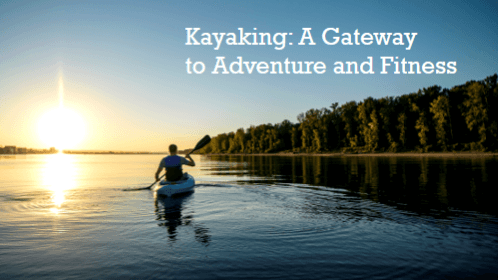
Kayaking on flat water is more than a sport—it’s a doorway to exploring the world’s waterways and a way to engage your entire body in a holistic workout. When you paddle the right way, you’ll feel it in your core, your arms, and your spirit.
Paddling with Purpose: A Journey of Self-Discovery
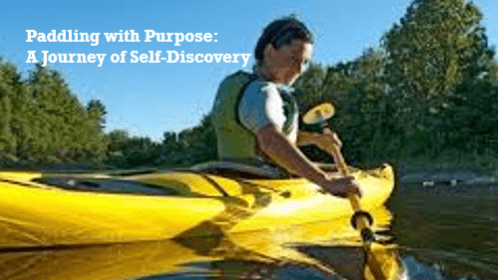
This isn’t just about learning a new skill; it’s also about self-discovery. As we cover the foundations of effective paddling, you’ll likely notice how every technique resonates with the principles of mindfulness and patience. Quality paddling is, after all, a meditative dance between you, the boat, and the water.
Grasping the Basics: Hand Placement and Paddle Care
To get things moving, let’s talk hand placement. It’s the unsung hero of kayaking efficiency. Picture this: you’re out on the water, paddle in hand, but something feels off. Your hands are aching, and you can’t quite find a rhythm. Chances are, your hands aren’t positioned just right.
Balancing Act: Hand Placement for Efficient Paddling
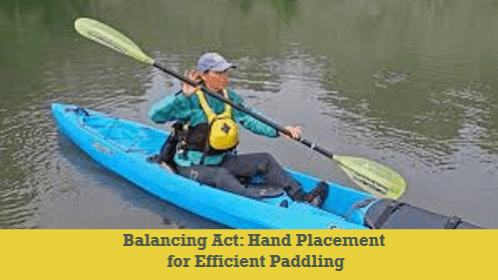
The goal here is balance. You want your hands equally spaced from each paddle’s blade. Extend your arms and place the center of the shaft atop your head. Your elbows should form a 90-degree angle.
Now, you’ve found the sweet spot. From there, bring your paddle down, and you’re in the optimal position to start paddling.
Drip Rings: Small Tools, Big Impact

Drip rings are downright handy. They may seem inconsequential at first glance, but they’re key to maintaining dry hands and arms while kayaking. They’re simple: these little gizmos slide onto the shaft of your paddle, snug up against each blade.
As you paddle, they catch any water that slyly tries to drip down the shaft, keeping you comfortable and focused on the experience.
The Gentle Hold: Mastering the Kayak Paddle Grip
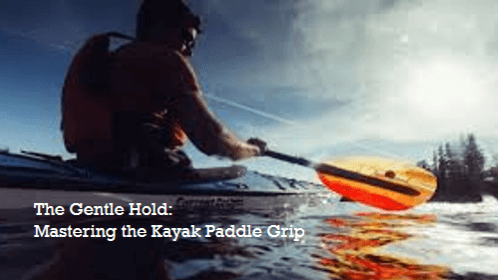
Let’s also discuss grip. A relaxed grip is your ticket to endurance. Clenching the paddle too tightly can lead to arm fatigue faster than you’d think.
Worse still, it could be your one-way ticket to tendonitis or dreaded blisters. So, relax those hands. Think of holding a bird: firm enough it won’t fly away, but gentle enough not to harm it.
Blisters Begone: Preventative Measures for Paddlers
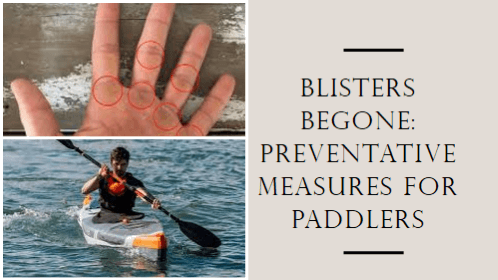
Speaking of blisters, who wants them? Not me, and I’m guessing you don’t either. Prevention is better than cure, folks.
First aid kits or even duct tape can be lifesavers for hotspots on your hands. And always remember, maintaining a relaxed grip goes a long way in keeping blisters at bay.
Navigating the Nuances: Torso Rotation and Paddle Twist
Understanding the dynamics of effective paddling isn’t just about your hands and arms; it’s also about your torso. Torso rotation is foundational for unleashing the full potential of your strokes. I’m going to show you how engaging your core can amplify the power behind each paddle dip and why this is vital for your paddling experience.
Core Power: Unlocking the Potential of Torso Rotation
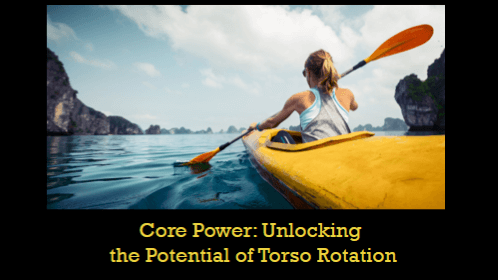
Torso rotation involves turning your core and shoulders to power the paddle, rather than relying solely on arm strength. This technique isn’t just recommended—it’s essential.
It allows you to utilize the larger muscle groups in your back and abdomen, which leads to a more powerful and less tiring stroke. Can you imagine paddling for hours using only your arms? That’s a recipe for quick fatigue. Instead, rotate your torso; it’s a game changer.
Efficiency in Motion: The Role of Core Strength in Paddling

Now, regarding paddle twist or feathering: it’s the angle between the two paddle blades. If you’re new to kayaking, you might find that a paddle with no twist, meaning the blades are aligned, is easier to manage—it’s straightforward and intuitive.
Down the road, you might want to experiment with different angles to find what’s most comfortable for you. In my experience, a feathered paddle can reduce wind resistance on the blade that’s out of the water, but it does require a bit of wrist flexibility.
Paddle Feathering: Finding Your Angle for Optimal Performance
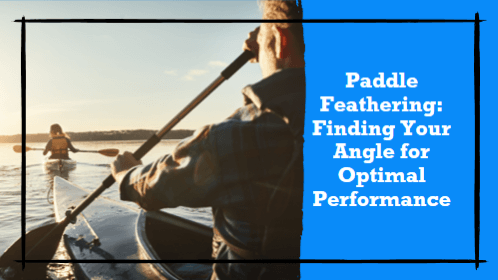
I suggest you start with a zero-degree feather and focus on honing your torso rotation. This allows you to concentrate on perfecting the key techniques without the added complexity of managing a feathered paddle.
Once you’ve mastered the movement and are confident in your technique, feel free to explore and adjust your paddle twist to see how it can benefit your paddling style.
Navigating Towards Mastery: The Journey in Paddling Proficiency
By now, you’ve been introduced to a range of techniques critical to enhancing your kayak paddling aptitude.
From the basic paddle grip and stroke mechanics on flat waters to the advanced maneuvers required for navigating rivers, these skills build not only your proficiency but your safety and enjoyment out on the water.
Enhancing Paddling Skills: From Basics to Rivers
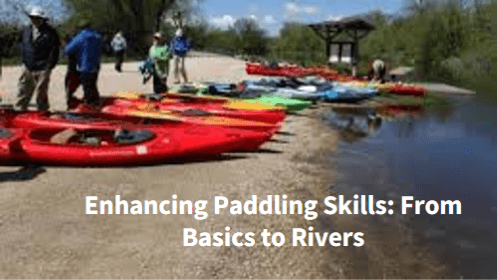
Remember, when it comes to kayaking, each paddle stroke takes you not just further across the lake or down the river but deeper into a world of self-improvement and aquatic exploration.
The transformation from beginner to adept paddler is a gratifying journey that marries physical prowess with the serenity of nature.
The Paddler’s Path: A Voyage of Self-Improvement

Kayaking isn’t just about moving from point A to point B; it’s about the moments of clarity, the rhythm of your strokes in harmony with the water, and the confidence that grows with every outing.
And let’s not forget the peace of mind that comes from knowing you can handle what the water has in store, courtesy of your advancing skills.
Kayaking: A Symphony of Strokes and Serenity
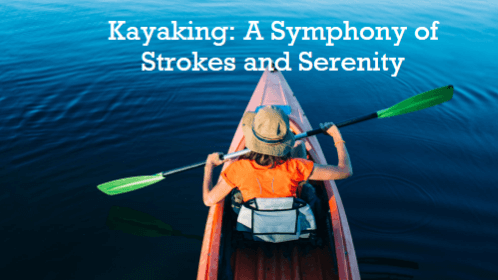
Always stay curious and open to learning, whether it’s refining a forward stroke or mastering a new rescue technique.
The river of knowledge never stops flowing, so dip your paddle into new experiences, and leverage each opportunity to become a safer, more efficient, and more joyful paddler.
The Endless River: Embracing Learning and Growth in Kayaking
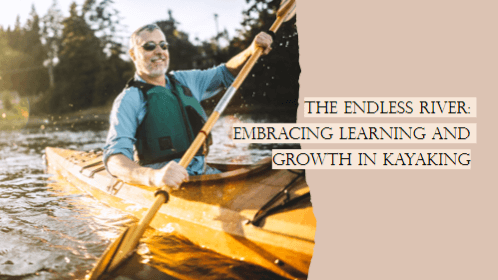
Thank you for joining me on this exploration of kayak paddling techniques. I’m confident that with practice and patience, you’ll not only master the waters but savor each stroke of the journey.
For deeper dives into specific techniques or to explore other facets of kayaking, check out the additional resources provided. Until next time, keep paddling, keep exploring, and above all, stay safe on the water.
